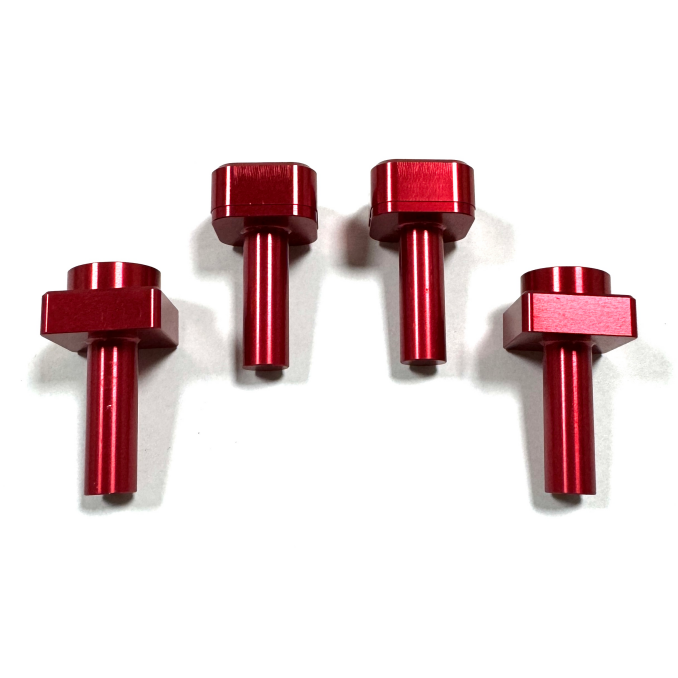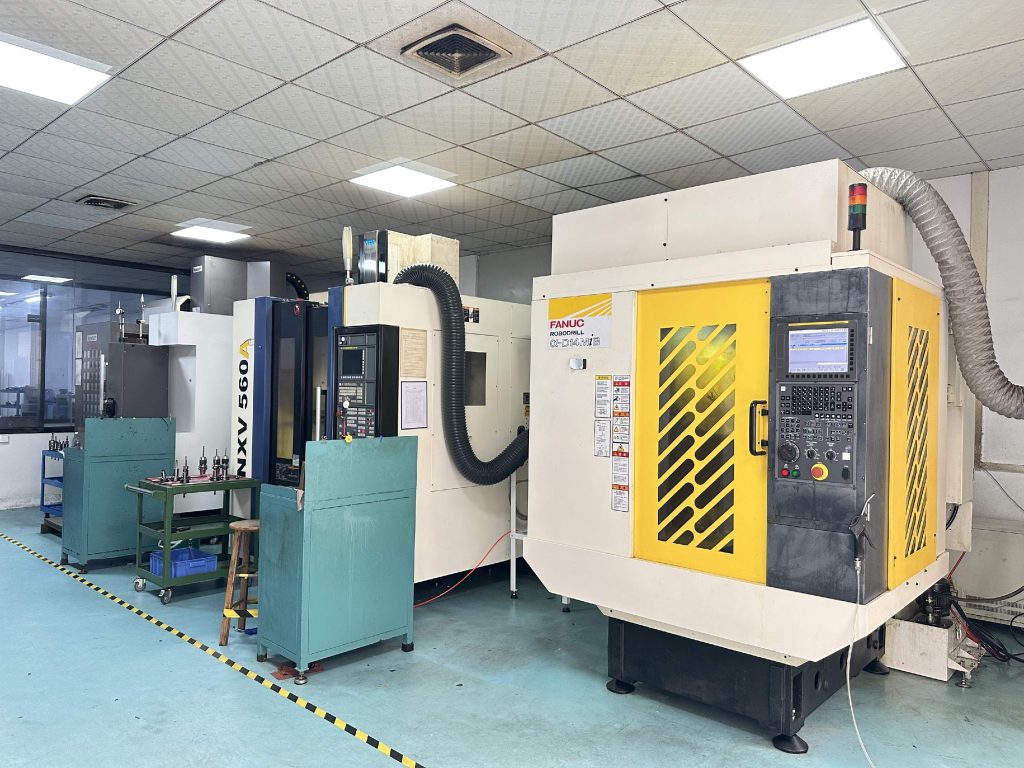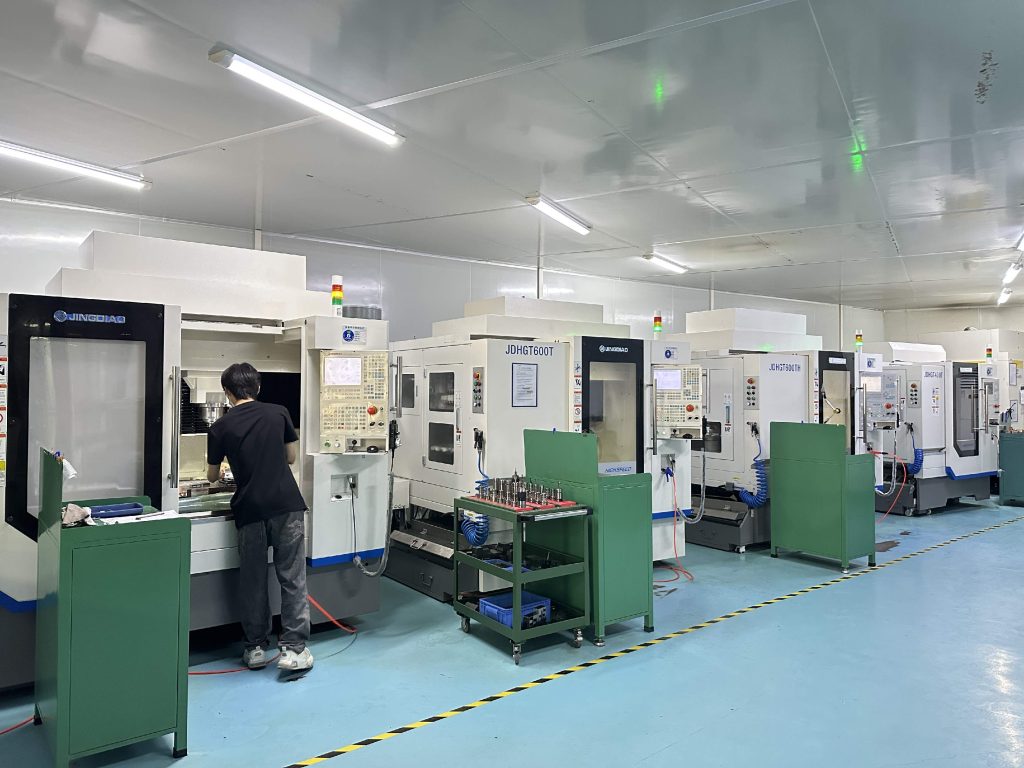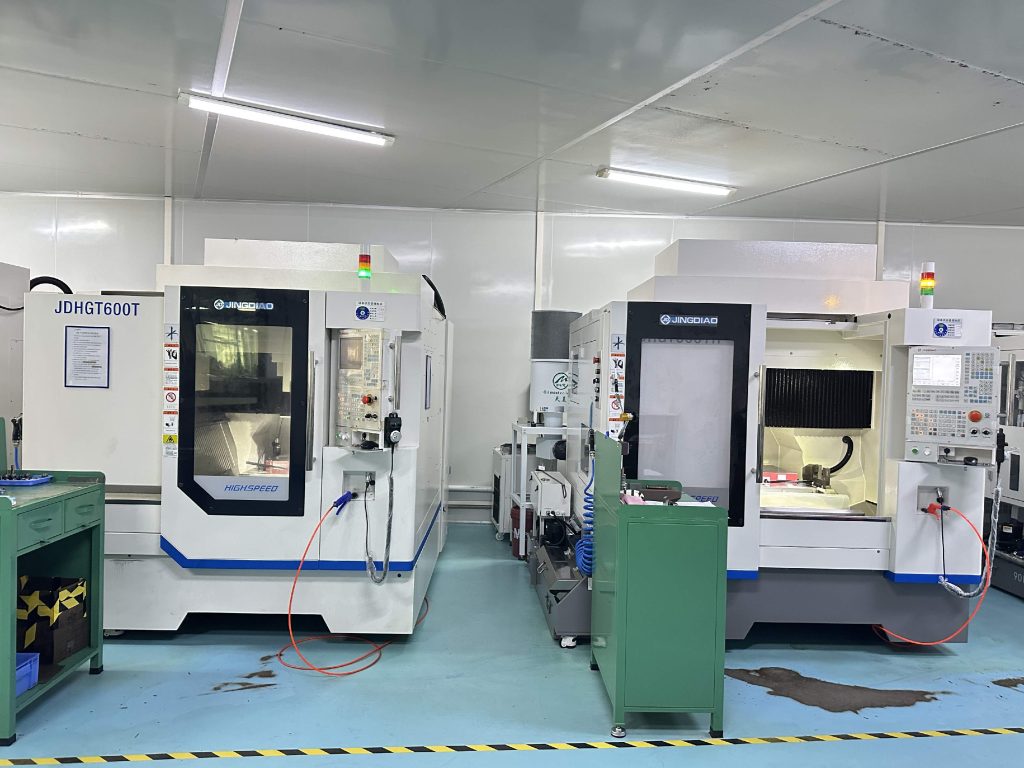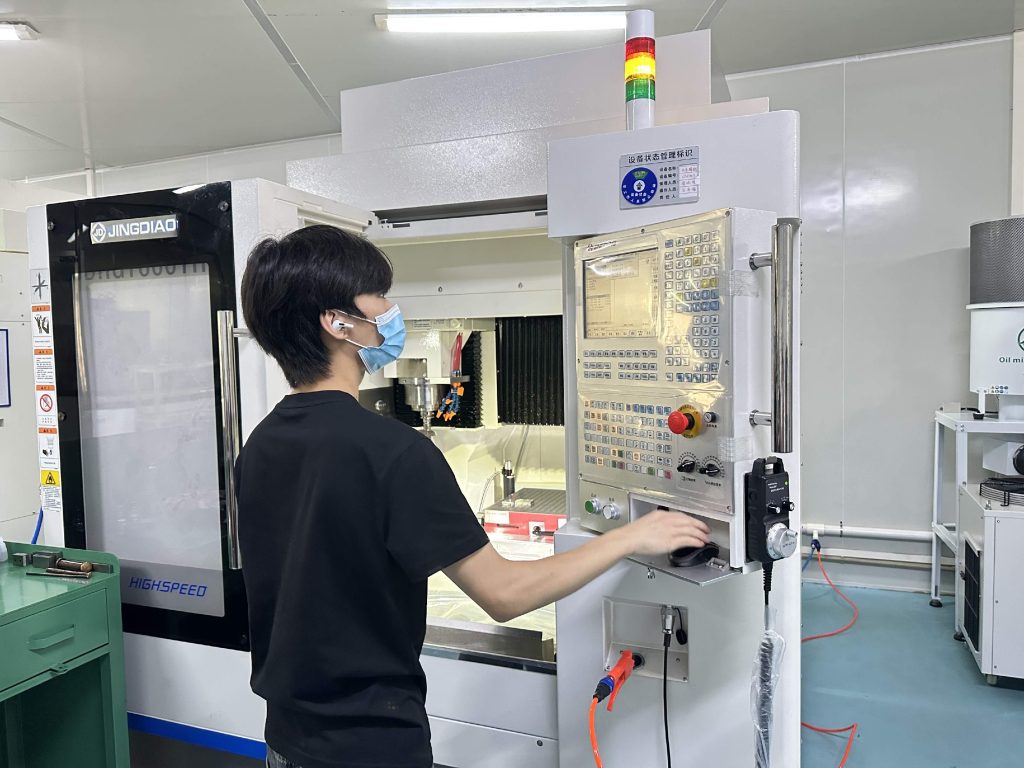What is CNC Turning?
CNC turning is a precision machining process that uses computer-controlled lathes to remove material from rotating workpieces, aiming to produce cylindrical or conical parts with high dimensional accuracy and smooth surface finishes. This process is an indispensable component of many industries, including automotive, aerospace, medical devices, and consumer goods.
Table of Contents
- How CNC Turning Works
- CNC Machining Processes
· CNC Milling Service
· CNC Turning Service - Main Components of a CNC Lathe
- Common CNC Turning Operations
- Advantages of CNC Turning
- Common Applications of CNC Turning
- Types of CNC Turning Machines
- The Role of CNC Turning in Modern Manufacturing
- Conclusion
- Our CNC Machining Center
How CNC Turning Works
The process of CNC turning can be broken down into four key steps:
Programming:CNC turning begins with programming, where the operator sets parameters based on the part design — including dimensions, tolerances, tool paths, cutting speed, feed rate, and additional operations such as facing or threading. The finalized program is then uploaded to the CNC controller to guide the entire machining process.
Setup & Calibration:The workpiece is securely clamped into the lathe’s spindle, and the cutting tool is installed in the tool turret or post. Calibration follows to ensure precise alignment between the tool and the workpiece.
Machining:During machining, the lathe rotates the workpiece while the cutting tool follows the programmed path to remove excess material layer by layer. The entire process is automatically controlled and continuously monitored to ensure accuracy and consistency.
Inspection & Finishing:Once machining is complete, the part undergoes dimensional and tolerance inspection to confirm it meets specifications. If required, additional finishing such as deburring or polishing is carried out to improve surface quality.
CNC Machining Processes
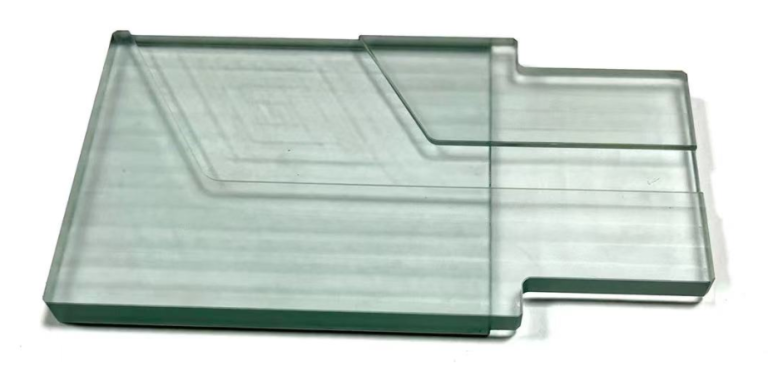
CNC Milling Service
CNC milling utilizes advanced 3-axis and 5-axis indexed machining technologies to efficiently process a wide range of engineering-grade metals and plastics, easily handling complex geometries and high-precision requirements.
As an efficient subtractive manufacturing process, CNC milling uses computer-controlled cutting tools to precisely remove excess material, delivering high-quality precision parts. Whether for prototyping or mass production, we provide fast and reliable custom solutions for clients across various industries.
CNC Turning Service
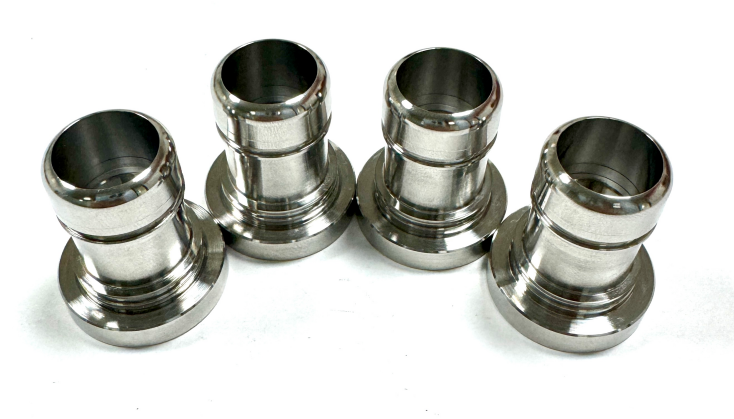
CNC turning is an efficient machining process that removes material by rotating the workpiece while a cutting tool shapes it. It is ideal for producing functional prototypes and end-use parts with cylindrical features.
This process is especially well-suited for high-precision machining of cylindrical components, delivering excellent quality with cost efficiency. It is widely used for both low-volume customization and high-volume production across various industries.
Main Components of a CNC Lathe
The CNC lathe consists of several essential components that facilitate the turning process:
| Component | Function |
| Bed | Supports all components and maintains their alignment during machining. |
| Headstock | Houses the spindle, motor, and drive system to control the workpiece’s rotation. |
| Spindle | Rotates the workpiece and ensures machining precision (e.g., speed stability, concentricity). |
| Chuck | Securely clamps and holds the workpiece during machining to prevent displacement or vibration. |
| Tailstock | Supports the opposite end of long or flexible workpieces to enhance machining rigidity (e.g., used with centers). |
| Tool Turret / Tool Post | Holds and indexes cutting tools, enabling multi-operation switching such as turning, drilling, and threading. |
| Carriage | Moves the tools along the X (radial) and Z (axial) axes to achieve precise cutting path control. |
| Control Panel | Loads CNC programs, sets machining parameters (e.g., spindle speed, feed rate), and monitors the machining status in real time. |
| Coolant System | Delivers coolant to the cutting zone to reduce tool temperature, minimize wear, and improve the workpiece’s surface finish. |
| Chip Conveyor / Guarding | Automatically removes chips to keep the machining area clean and enhances operator safety through protective structures. |
Common CNC Turning Operations
Some of the most common operations carried out on a CNC lathe include:
| Operation | Description |
| Facing | Flattens the end of the workpiece to create a smooth surface. |
| OD Turning | Shapes the outer diameter (OD) of the part. |
| Boring | Enlarges or finishes internal diameters (ID). (Note: “Enlarges” refers to expanding the hole diameter, while “finishes” improves surface accuracy.) |
| Drilling | Creates holes along the axis or center of the workpiece. |
| Taper Turning | Produces conical shapes by moving the tool along an angled path. |
| Grooving | Cuts narrow channels or recesses (e.g., for O-rings). |
| Threading | Produces internal or external screw threads. |
| Knurling | Adds a patterned texture to improve grip, often used on handles or knobs. |
Advantages of CNC Turning
CNC turning offers a host of benefits, making it highly favored in precision manufacturing:
- High Precision:Delivers excellent dimensional accuracy and repeatability, even for complex geometries.
- Efficiency & Speed:Capable of high-speed machining with minimal downtime, ideal for both prototyping and mass production.
- Consistent Quality:Automated control ensures uniform output across all parts with minimal human error.
- Cost-Effective for Cylindrical Parts:Especially efficient and economical for producing round or symmetrical components.
- Versatility:Suitable for a wide range of materials including metals, plastics, and composites.
- Reduced Waste:Optimized tool paths and precise cutting reduce material waste.
- Supports Complex Operations:Can perform multiple operations (turning, facing, threading, etc.) in a single setup.
Common Applications of CNC Turning
CNC turning is used extensively in various industries for parts requiring rotational symmetry. Some of its applications include:
- Automotive Parts:Production of shafts, bushings, pistons, and other rotational components.
- Aerospace Components:Precision-machined parts such as turbine shafts, landing gear pins, and housings.
- Medical Devices:Manufacturing of surgical tools, implants, and precision diagnostic components.
- Industrial Machinery:Creation of custom fasteners, rollers, gears, and couplings.
- Electronics & Connectors:Machining of pins, terminals, housings, and custom connector parts.
- Oil & Gas Equipment:Production of valves, threaded fittings, seals, and other high-pressure components.
- Custom Prototyping:Rapid production of round or cylindrical prototypes for form, fit, and function testing.
Types of CNC Turning Machines
CNC turning machines vary in their design to suit different production needs:
- 2-Axis CNC Lathe:Basic lathe with X and Z axis control, ideal for simple cylindrical parts such as shafts and bushings.
- Multi-Axis CNC Lathe (3, 4, or 5 Axis)
- Allows more complex machining by adding additional axes for milling, drilling, or angled cuts.
- CNC Turning Centers:Advanced lathes equipped with automatic tool changers, enclosures, and live tooling capabilities. Suitable for high-volume, high-precision production.
- Swiss-Type CNC Lathe:Designed for small, high-precision parts. The workpiece is fed through a guide bushing, providing superior support and allowing very fine tolerances.
- Vertical CNC Lathe (VTL):Ideal for large, heavy, or asymmetrical workpieces. The spindle is mounted vertically, making it easier to support the part’s weight.
- Mill-Turn Machines:Hybrid machines that combine turning and milling capabilities in a single setup. Great for complex parts that require both operations.
The Role of CNC Turning in Modern Manufacturing
CNC turning plays a vital role in modern manufacturing by enabling the precise and efficient production of cylindrical components across a wide range of industries. With its ability to maintain tight tolerances, reduce manual labor, and increase production speed, CNC turning has become essential for both prototyping and high-volume production. From automotive shafts to aerospace pins and medical implants, CNC turning ensures consistent quality, dimensional accuracy, and repeatability. As manufacturing continues to evolve toward automation and high-mix, low-volume production, CNC turning remains a cornerstone technology that supports innovation, cost efficiency, and scalability.
Conclusion
In summary, CNC turning is a vital machining process that delivers outstanding precision, efficiency, and flexibility across various industries. Whether for low-volume custom parts or large-scale production, CNC turning ensures consistent quality and cost control. By leveraging advanced CNC turning services, manufacturers can streamline workflows, shorten lead times, and gain a competitive edge in today’s demanding market.
Our CNC Machining Center
Our CNC machining center is equipped with over 70 advanced devices, including 3-axis, 4-axis, and 5-axis CNC machines, which are capable of manufacturing parts that meet most of our customers’ requirements. In addition to the CNC machining centers, we also possess a number of high-end equipment such as precision grinding machines and precision wire cutting machines.

